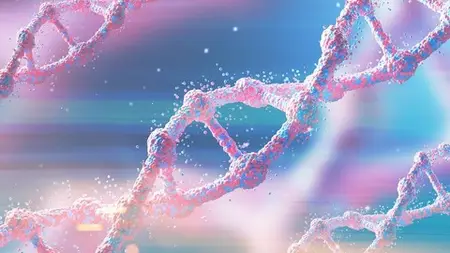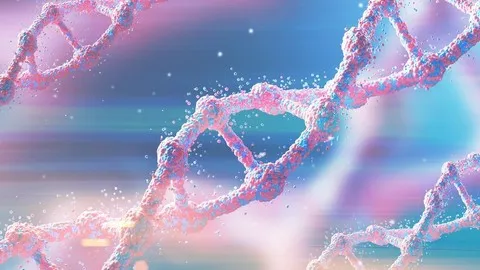Learn Bioinformatics & Databases - Master Through Projects
Published 11/2024
MP4 | Video: h264, 1920x1080 | Audio: AAC, 44.1 KHz
Language: English | Size: 929.09 MB | Duration: 1h 40m
Published 11/2024
MP4 | Video: h264, 1920x1080 | Audio: AAC, 44.1 KHz
Language: English | Size: 929.09 MB | Duration: 1h 40m
Discover Bioinformatics Fundamentals and Master Database Skills with Hands-On Projects for Real-World Applications
What you'll learn
Understand the Fundamentals of Bioinformatics: Gain a solid understanding of bioinformatics concepts, its subfields, and their applications in biological resear
Explore Core Areas of Omics: Learn the basics of genomics, proteomics, transcriptomics, metabolomics, and pharmacogenomics.
Develop Computational Biology Skills: Understand computational biology concepts and the trends in computational techniques for bioinformatics.
Master Bioinformatics Databases: Get hands-on experience with primary bioinformatics databases, including NCBI, EMBL, and DDBJ, to retrieve and analyze biologic
Understand Structural Bioinformatics: Explore the role of structural bioinformatics in analyzing biological macromolecules.
Learn Practical Data Retrieval Skills: Perform practical data retrieval and understand how to work with real-world biological datasets.
Build Bioinformatics Career Skills: Identify the skills needed to build a career in the bioinformatics field and stay updated with industry trends.
Apply Knowledge Through Assessments: Test your knowledge of bioinformatics fields through quizzes and assignments, ensuring readiness for real-world application
Requirements
Willingness to Learn: An eagerness to explore new topics and develop hands-on skills in bioinformatics.
No Specialized Software Needed: All tools and software used in the course are open-source or freely available.
Access to a Computer and Internet: A computer (Windows, macOS, or Linux) with a stable internet connection for accessing online tools and databases.
No Programming Experience Needed: This course is designed for beginners, so prior programming knowledge is not required.
Interest in Bioinformatics: A curiosity about bioinformatics and its applications in biology and data science.
Basic Understanding of Biology: A foundational knowledge of biological concepts such as DNA, RNA, and proteins is helpful but not mandatory.
Description
Are you fascinated by the intersection of biology and data science? Do you want to master bioinformatics tools and databases to analyze biological data? This course, "Learn Bioinformatics & Databases - Master Through Projects," is designed to provide you with a comprehensive understanding of bioinformatics and its applications. With hands-on projects and practical examples, you will gain the knowledge and skills needed to succeed in this exciting field.Why Learn Bioinformatics?Bioinformatics is a rapidly growing discipline that combines biology, computer science, and data analysis. It is the backbone of modern biological research, enabling scientists to analyze massive datasets, identify patterns, and make groundbreaking discoveries in genomics, proteomics, transcriptomics, and more. From decoding genetic information to predicting drug interactions, bioinformatics plays a critical role in advancing science and medicine.Whether you’re a biology student, researcher, or someone transitioning into bioinformatics, this course will guide you through the foundational concepts and practical applications of bioinformatics.What You’ll LearnIn this course, you will:Explore the Foundations of Bioinformatics: Gain a clear understanding of what bioinformatics is, its subfields, and its importance in scientific research.Master Core Areas of Omics: Learn about genomics, proteomics, transcriptomics, metabolomics, structural bioinformatics, pharmacogenomics, and more.Dive into Computational Biology: Understand the role of computational biology and the trends shaping this field.Work with Bioinformatics Databases: Learn how to access and retrieve data from primary bioinformatics databases such as NCBI, EMBL, and DDBJ.Develop Practical Skills: Apply your knowledge through hands-on projects and quizzes to solidify your understanding.Build Career-Ready Skills: Identify the skills needed to thrive in the field of bioinformatics and prepare yourself for future career opportunities.Course HighlightsBeginner-Friendly: This course is designed for learners with no prior experience in bioinformatics or programming. Clear, step-by-step instructions ensure that you can follow along with ease.Comprehensive Curriculum: Covering everything from bioinformatics fundamentals to hands-on database applications, this course provides a thorough understanding of the subject.Hands-On Projects: Learn by doing! You’ll work on real-world projects that allow you to apply what you’ve learned.Quizzes and Assessments: Test your knowledge with quizzes to ensure you understand key concepts and are ready to move on to more advanced topics.Career-Focused Content: Explore the skills needed for bioinformatics roles and how to stay updated with the latest trends in the field.Course StructureThe course is divided into two main sections:Introduction to Bioinformatics and Subfields:In this section, you’ll be introduced to the fundamentals of bioinformatics and its key subfields. Topics include genomics, proteomics, transcriptomics, metabolomics, structural bioinformatics, pharmacogenomics, computational biology, and trends in the field. You’ll also learn about the essential skills needed to build a successful career in bioinformatics.Primary Bioinformatics Databases and Data Retrieval:This section focuses on practical skills for working with bioinformatics databases. You’ll learn how to access and retrieve data from primary databases like NCBI, EMBL, and DDBJ through step-by-step practical sessions.Who Is This Course For?This course is tailored for:Beginners in Bioinformatics: Those with little to no prior experience in bioinformatics who want to start learning from scratch.Biology Students and Researchers: Undergraduate and graduate students, as well as researchers, looking to incorporate bioinformatics tools into their studies or research.Professionals in Life Sciences: Professionals in biology, genetics, or related fields who want to expand their knowledge with bioinformatics skills.Data Enthusiasts: Individuals interested in applying data analysis techniques to biological data.Career Switchers: Anyone transitioning into bioinformatics from a different field.Why Take This Course?Bioinformatics is not just a skill; it’s a necessity for anyone working in biology or life sciences today. With the increasing availability of biological data, researchers and professionals need bioinformatics skills to analyze and interpret information efficiently.This course provides you with a solid foundation in bioinformatics, focusing on practical applications through hands-on projects. By the end of this course, you’ll not only understand the concepts but also have the confidence to use bioinformatics tools and databases in real-world scenarios.Tools and ResourcesYou’ll be using freely available online tools and databases, ensuring accessibility for all learners. Additionally, you’ll gain insight into commonly used bioinformatics platforms, making it easier for you to transition into professional environments.What Makes This Course Unique?Practical Approach: Rather than focusing solely on theory, this course emphasizes practical skills that you can use immediately in your studies or career.Expert Guidance: The course is taught by an experienced bioinformatician, ensuring that you receive accurate and up-to-date information.Interactive Content: Quizzes, projects, and hands-on tutorials keep you engaged and help reinforce your learning.Start Your Bioinformatics Journey TodayWhether you’re a student, researcher, or professional, this course will equip you with the tools and knowledge needed to succeed in bioinformatics. By mastering the fundamentals and learning through projects, you’ll be prepared to tackle real-world challenges and make meaningful contributions to the field of bioinformatics.Enroll now and take the first step towards mastering bioinformatics and databases!
Overview
Section 1: Introduction to Bioinformatics and Subfields
Lecture 1 Introduction to Bioinformatics
Lecture 2 Genomics
Lecture 3 Proteomics
Lecture 4 Transcriptomics
Lecture 5 Metabolomics
Lecture 6 Structural Bioinformatics
Lecture 7 Pharmacogenomics
Lecture 8 Computational Biology
Lecture 9 Other Subfields of Bioinformatics
Lecture 10 Trends In Computational Biology
Lecture 11 Skills Needed For Bioinformatics Field
Section 2: Primary Bioinformatics Databases and Data Retrieval
Lecture 12 Introduction To Bioinformatics Databases
Lecture 13 Primary Databases Introduction And NCBI Practical
Lecture 14 EMBL and DDBJ Database Practical
Section 3: Secondary Bioinformatics Databases
Lecture 15 Introduction to secondary databases
Lecture 16 PDB database
Lecture 17 Uniprot Database
Lecture 18 GEO Database
Section 4: Derived Bioinformatics Databases
Lecture 19 Derived Databases and Practical
Section 5: Conclusion and Project Insights
Lecture 20 Conclusion and Project Insights
Educators: Teachers or professors who want a structured course to introduce bioinformatics topics to their students.,Self-Learners: Enthusiastic learners who are passionate about exploring the intersection of biology, computer science, and data analysis.,Career Switchers: Anyone considering transitioning into bioinformatics or computational biology from a different field.,Aspiring Data Scientists: Individuals interested in applying data science concepts to biological data.,Life Science Professionals: Professionals in biology, genetics, biotechnology, or related fields who want to expand their skill set with bioinformatics techniques.,Students and Researchers in Biology: Undergraduate and graduate students, as well as researchers looking to incorporate bioinformatics tools into their work.,Beginners in Bioinformatics: Individuals with little to no experience in bioinformatics who want to start learning from scratch.



